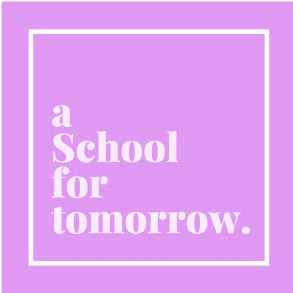Game Changers | Live
School Communities
How can you be sure where best to direct your important resources and focus your critical energy in community engagement? What is the right strategy for motivating and recruiting your community contacts to assist with the educational and broader purpose of your school?

How does one formulate the right strategy for community engagement, the art of aligning and activating the members of a school community? The field of community engagement is such a broad one and, in most schools, it falls to a small team (often just one person) to move right across the breadth of interconnected marketing, communications, events, database, networking and other activity to ensure that the community surrounding and supporting a school is both healthy and aligned with the school’s mission and ethos. With so much to do, it can become too easy to become bogged down in the agency of operations without emerging from the day-to-day details to consider the compelling rationale for this activity.
The starting point for determining your strategy comes with gathering and classifying the data on your community. As we have seen recently when we were identifying the qualities of a future school, data-nuanced practice is one of the hallmarks of such an approach:
Reflective inquiry: do decision-makers habitually ask searching and meaningful questions while moving through one of a number of well-rehearsed and considered multi-stage process that ask them to contemplate context, balance the best of external research with internal evidence of impact, generate a range of options, and select the best available course of action to achieve the task at hand?
We are convinced the future of school is community. A genuine strategy for community engagement considers it from the perspective of the community members themselves, rather than just prescribing a range of activities that may or may not meet the specific needs of people for connection.
So, let’s think through a data-nuanced approach to understanding the nature of your community members and how best to connect with them. We recommend that schools categorise their community contacts in terms of both their alignment with the school and their activity within the school community. To do so, requires placing a numerical value against each of these criteria and plotting this activity on a matrix. Let’s see how this might work.
Alignment refers to how committed a contact is to the school’s values, ethos, mission and strategy. It’s helpful to rate contacts from 4 through 1 as follows:

Activity refers to how involved a contact is in the daily and special activity of the school and its broader community. Again, it’s useful to rate contacts from 4 through 1 as follows:

The next step is to convert this understanding of who is more or less aligned and who is more or less committed into positive action to engage all of our contacts appropriately.
The notion of an all-encompassing strategy for community belies the complex and stratified nature of a school community. In the same way that we use data and analysis to identify differentiated strategies for learning, we can use a similar approach to work out the right strategies for the right people to help them to become more aligned and more active in the life of their school community.
Let’s see how this works in relation to the our Community Engagement Strategy plan, our tool for helping schools to develop the right strategy for groups in the community we have identified four key ways to foster a connected community:
- Connect through advocacy: This is the strategy for those community members who seem to be at everything and always have a positive word to say about the school. With a high degree of alignment and activity, these contacts are well placed to become informed and influential advocates in their own right for the school and its initiatives. In this instance, a strategy that builds on these contacts’ high levels of commitment and involvement by focusing on equipping these contacts to become strong and effective advocates can work well.
- Connect through leadership: Every school has community members who are clearly on board with the mission but are not active in their involvement. There may be very good reasons for this – people are very busy with their lives and may feel comfortable being less involved in the life of the school as well. Nonetheless, for those who are aligned and would like to become more involved, a strategy based around providing leadership opportunities can help to better employ the talents of community members in projects where possible.
- Connect through personalisation: This is the strategy for those community members who have a high degree of involvement but seem to be some of the stronger critics of the school and its strategies. We have seen schools who engage these contacts through very personalised relationships both improve the alignment of these people as well as maintain their activity.
- Connect through narrative: This is the approach we recommend for those community members who are struggling to be involved within and also to be constructive about the community. With a low degree of alignment and activity, these contacts are moving in parallel to the storylines to the community without sufficient genuine or positive connection from their perspective. In this instance, a strategy that focuses on understanding their stories and sharing the real stories of growth of the school can help to build a shared narrative over time.
Some educators may find this approach to developing strategy perhaps a little clinical in its methodology; the idea of putting a number next to a person may not feel right. Yet the number does not become the person – it’s a way for identifying the proximity of a community member to the school and determining the very best strategy for connecting with that person. It is both contemporary and relevant to move a school to decision-making that is informed by data and diagnosing a range of strategies to help different people at different stages of their own journeys with the school. It is also appropriate stewardship of that most precious of resources – people – to consider how best to direct them towards the right purpose and seek the most efficient use of resources to gain the desired impact.
We are convinced the future of school is community. A genuine strategy for community engagement considers it from the perspective of the community members themselves, rather than just prescribing a range of activities that may or may not meet the specific needs of people for connection. Applying the right thinking as to how to connect with and engage members of a community is the work we all need to be doing in schools to ensure that we are authentically understanding the needs of the communities which we serve.






